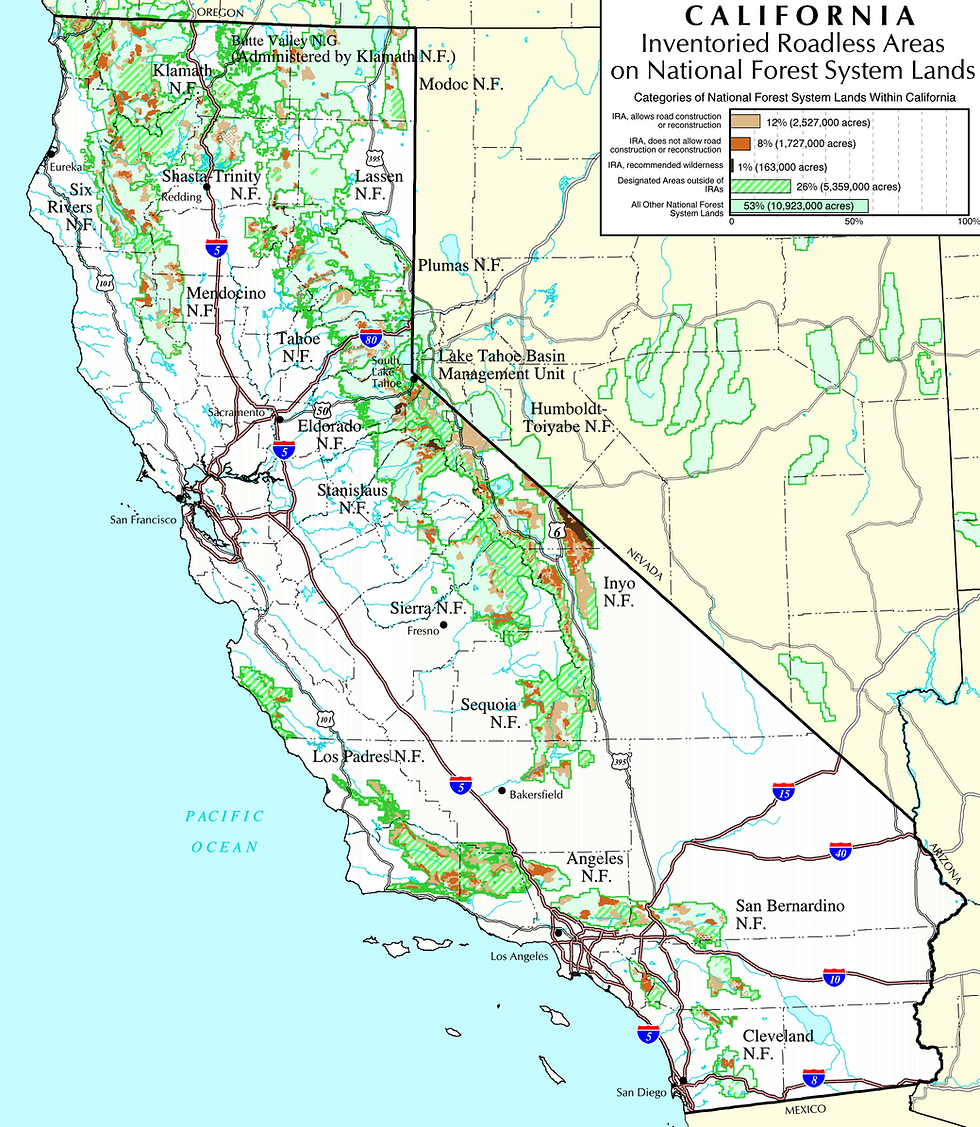SPI Destroys Owl Habitat in Trinity County
- Jul 13, 2010
- 3 min read
Even under the watch of the US Fish and Wildlife Service Technical Assistance process, SPI conducted significant and damaging logging around its Northern Spotted Owl Activity Centers. As a result, Northern Spotted Owls have been nearly extirpated from SPI lands. Many of the owls now impacted by SPI’s operations reside on US Forest Service lands or other properties adjacent to SPI.

Since the US Fish and Wildlife Service turned over the Technical Assistance duties for Northern Spotted Owls to Cal Fire in 2008, SPI has filed and executed numerous THPs using the sub-par standards of the California Forest Practice Rules instead of employing the guidance of the US Fish and Wildlife Service. These antiquated Forest Practice Rules allow SPI to employ inferior habitat typing definitions and allows much more logging in and around Northern Spotted Owl Activity Centers than do the US Fish and Wildlife Service’s take avoidance guidelines.
In 2010, SPI is once again planning to log suitable Northern Spotted Owl habitat within close proximity of NSO Activity Centers. The latest two THPs, 2-10-011TRI and 2-10-019TRI both propose intensive clearcut logging operations near known Northern Spotted Owl Activity Centers.
THP 2-10-011 lies in Trinity County. There are five known NSO Activity Centers within 1.3 mi of this THP. This plan proposes to clearcut 261 of the total 276 acres. Clearcut logging of suitable NSO habitat is proposed within 500′ of one known Activity Center where a Northern Spotted Owl pair was detected as recently as 2007. The plan also proposes clearcutting within 1000′ of another known Activity Center. All NSO Activity Centers associated with this THP are vastly deficient in high quality nesting and roosting habitat. Past logging has targeted the best of the NSO habitat associated with these Activity Centers. What remains is largely regenerated stands that provide for foraging habitat. Foraging habitat is what is currently proposed for clearcutting under this plan. No past or current survey data has been provided by SPI, so it is impossible to know the true status of these NSO Activity Centers.
THP 2-10-019 also lies in Trinity County. There are three known Northern Spotted Owl Activity Centers within 1.3 mi of the THP area. This THP covers 1,515 acres, of which 813 acres is clearcutting. This plan proposes clearcut logging of suitable NSO habitat within 500′ of a known activity Center. Occupancy data provided by the Department of Fish and Game NSO database is extremely lacking for the Activity Centers associated with this plan. Furthermore, no past or current survey data has been provided by SPI, so it is impossible to know the true status of these NSO Activity Centers. The Activity Centers associated with this THP are extremely deficient in high quality nesting and roosting habitat. Foraging habitat is what is currently proposed for clearcutting under this plan.
While both these new THPs propose to employ the stronger and more protective habitat definitions in the US Fish and Wildlife Service Take Avoidance Guidelines, the habitat retention standards rely on the paltry protective measures of the FPRs. Thus no matter how SPI categorizes its NSO habitat, the habitat retention standards employed are vastly inferior to the US Fish and Wildlife Service’s habitat retention standards.
Considering that all the Northern Spotted Owl Activity Centers associated with these THPs are deficient in essential habitat, further logging poses a significant risk to owls, not only because of the intensity of the clearcut logging, but also because of the close proximity to Northern Spotted Owl nests. Northern Spotted Owls in California’s interior need a greater degree of nesting roosting and sheltering habitat due to the extremes in weather found inland. Logging within 500′ of known Activity Centers will reduce sheltering habitat, create unnatural and abrupt habitat edges leaving NSO more vulnerable to predators and Barred Owl invasion, and will significantly alter the micro climate at the center of the NSO home range.
Sierra Pacific Industries (SPI), the largest single landowners in California, has been intensively managing its forestland in Humboldt, Trinity, and Shasta counties. Much of these lands once served as habitat for Northern Spotted Owls. However over the last decade, SPI has begun to “hem in and push out” the owls on its property.





Comments